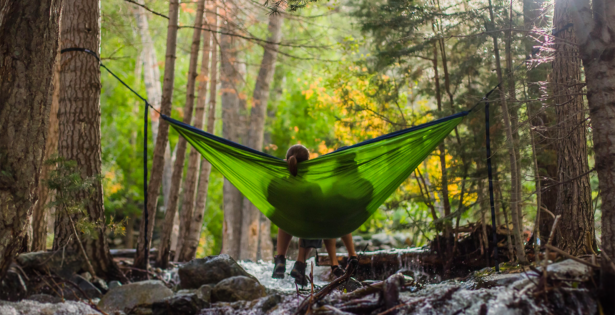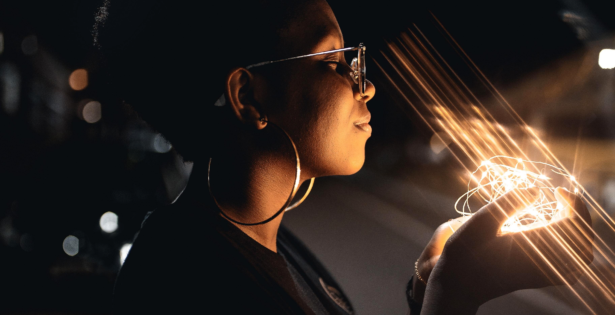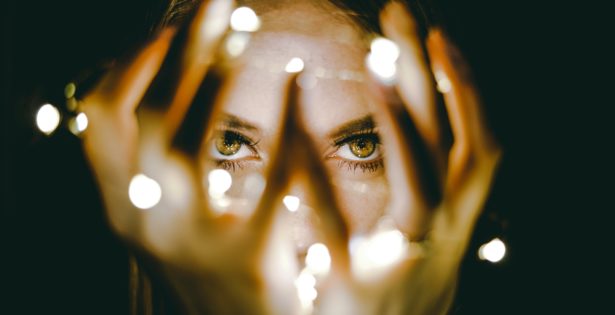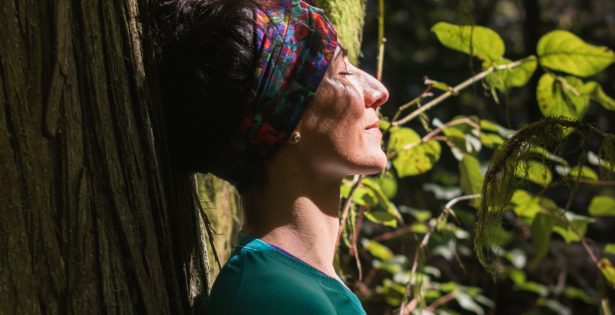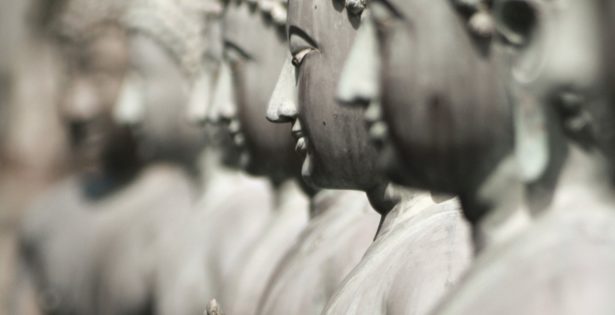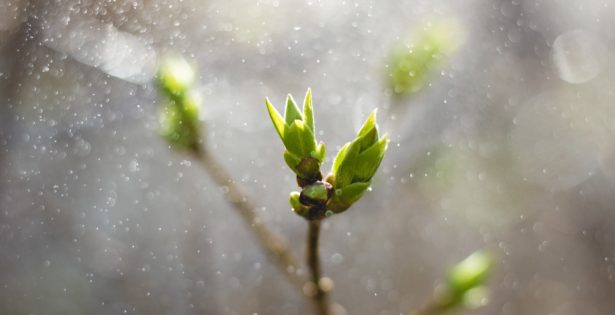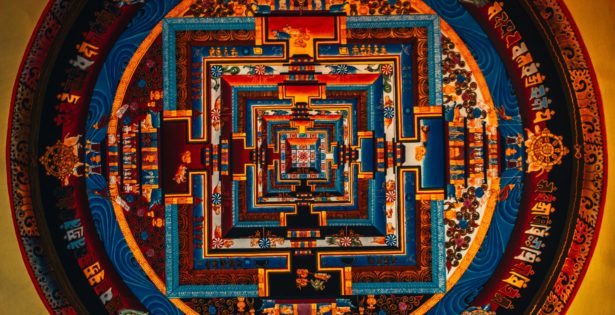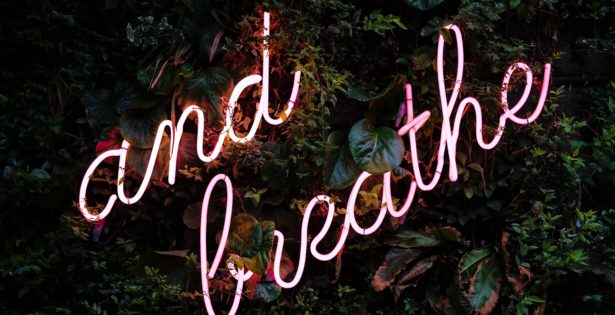WP_Query Object
(
[query] => Array
(
[category__in] => Array
(
[0] => 67
[1] => 419
[2] => 23
[3] => 66
[4] => 65
)
[post__not_in] => Array
(
[0] => 8498
)
[posts_per_page] => 50
[ignore_sticky_posts] => 1
[orderby] => desc
[_shuffle_and_pick] => 3
)
[query_vars] => Array
(
[category__in] => Array
(
[0] => 67
[1] => 419
[2] => 23
[3] => 66
[4] => 65
)
[post__not_in] => Array
(
[0] => 8498
)
[posts_per_page] => 50
[ignore_sticky_posts] => 1
[orderby] => desc
[_shuffle_and_pick] => 3
[error] =>
[m] =>
[p] => 0
[post_parent] =>
[subpost] =>
[subpost_id] =>
[attachment] =>
[attachment_id] => 0
[name] =>
[pagename] =>
[page_id] => 0
[second] =>
[minute] =>
[hour] =>
[day] => 0
[monthnum] => 0
[year] => 0
[w] => 0
[category_name] => creative_living
[tag] =>
[cat] => 67
[tag_id] =>
[author] =>
[author_name] =>
[feed] =>
[tb] =>
[paged] => 0
[meta_key] =>
[meta_value] =>
[preview] =>
[s] =>
[sentence] =>
[title] =>
[fields] =>
[menu_order] =>
[embed] =>
[category__not_in] => Array
(
)
[category__and] => Array
(
)
[post__in] => Array
(
)
[post_name__in] => Array
(
)
[tag__in] => Array
(
)
[tag__not_in] => Array
(
)
[tag__and] => Array
(
)
[tag_slug__in] => Array
(
)
[tag_slug__and] => Array
(
)
[post_parent__in] => Array
(
)
[post_parent__not_in] => Array
(
)
[author__in] => Array
(
)
[author__not_in] => Array
(
)
[search_columns] => Array
(
)
[suppress_filters] =>
[cache_results] => 1
[update_post_term_cache] => 1
[update_menu_item_cache] =>
[lazy_load_term_meta] => 1
[update_post_meta_cache] => 1
[post_type] =>
[nopaging] =>
[comments_per_page] => 50
[no_found_rows] =>
[order] => DESC
)
[tax_query] => WP_Tax_Query Object
(
[queries] => Array
(
[0] => Array
(
[taxonomy] => category
[terms] => Array
(
[0] => 67
[1] => 419
[2] => 23
[3] => 66
[4] => 65
)
[field] => term_id
[operator] => IN
[include_children] =>
)
)
[relation] => AND
[table_aliases:protected] => Array
(
[0] => wp_term_relationships
)
[queried_terms] => Array
(
[category] => Array
(
[terms] => Array
(
[0] => 67
[1] => 419
[2] => 23
[3] => 66
[4] => 65
)
[field] => term_id
)
)
[primary_table] => wp_posts
[primary_id_column] => ID
)
[meta_query] => WP_Meta_Query Object
(
[queries] => Array
(
)
[relation] =>
[meta_table] =>
[meta_id_column] =>
[primary_table] =>
[primary_id_column] =>
[table_aliases:protected] => Array
(
)
[clauses:protected] => Array
(
)
[has_or_relation:protected] =>
)
[date_query] =>
[request] =>
SELECT SQL_CALC_FOUND_ROWS wp_posts.ID
FROM wp_posts LEFT JOIN wp_term_relationships ON (wp_posts.ID = wp_term_relationships.object_id)
WHERE 1=1 AND wp_posts.ID NOT IN (8498) AND (
wp_term_relationships.term_taxonomy_id IN (23,65,66,67,419)
) AND ((wp_posts.post_type = 'post' AND (wp_posts.post_status = 'publish' OR wp_posts.post_status = 'acf-disabled')))
AND ID NOT IN
(SELECT `post_id` FROM wp_postmeta
WHERE `meta_key` = '_pilotpress_level'
AND `meta_value` IN ('','employee')
AND `post_id` NOT IN
(SELECT `post_id` FROM wp_postmeta
WHERE `meta_key` = '_pilotpress_level'
AND `meta_value` IN ('' )))
GROUP BY wp_posts.ID
ORDER BY wp_posts.post_date DESC
LIMIT 0, 50
[posts] => Array
(
[0] => WP_Post Object
(
[ID] => 8949
[post_author] => 3
[post_date] => 2023-02-08 20:41:47
[post_date_gmt] => 2023-02-08 20:41:47
[post_content] =>
In my early 20s I had a boss who would ask me every morning, “How goes the battle?” I had never heard that expression before, but recognized that he meant, “How’s it going?” At the time I was learning about neuro-linguistic programming and becoming attuned to people’s word choices, so it struck me as an interesting – and loaded – phrase. Then I began to notice how common it is for people to characterize life as a fight – an ongoing series of conflicts, something we need to slog through, with a risk of imminent danger and an us-versus-them mentality.
Even if we see ourselves as winning the battle, if we hold this perspective, there’s still a chance of getting ambushed, right up to the last minute. So, we must always have our guard up, sleep with one eye open, check our drink for poison, and so on. It causes chronic stress, and we’re never entirely free.
Meanwhile, there are people who see life in a more positive light – as a game, a gift, an opportunity to explore, connect, experience, and be of service. Are they naïve? Are they less successful? Are they blindsided by the unexpected? I don’t believe so. If anything, because their perspective isn’t innately stress-inducing, they have greater resources for adapting to whatever comes.
I encourage you to examine your relationship with the world. How would you sum up your story? What kind of words do you use, both to others and yourself, when you talk and think about your challenges and ambitions? How do you feel about others aiming for the same goals as you? What sorts of bodily feelings go along with this? For extra support in re-wiring yourself, check out our workbook, Freedom, and try doing it for a month.
If you do find that you’re harboring a “battle” mentality, I wonder if it’s possible for you to symbolically wave the white flag, saying to the world (and yourself), “I’m not at war with you.” I know the stakes feel very high sometimes, but what if. . . (1) you could clearly see that being in ongoing conflict is more detrimental than it is beneficial to you, and (2) you had an unwavering link to something you could trust, an assurance that you are fundamentally okay, no matter what.
We often speak of rousing our inner warrior and the term “warrior” comes up a lot in self-help books. The warrior archetype is deep in our collective consciousness. Everyone knows it. And there’s a good side to it. Often, we evoke the warrior archetype when we wish to inspire ourselves to be clear, sharp, and disciplined, to stand up for our values, to protect those in need, to be brave, to have integrity and honor. But the other side of being a warrior is, of course, that you’re at war.
How can we embody these virtues without the sense of perpetual conflict? We live according to archetypes all the time – father, mother, husband, wife, cop, healer, good guy, bad guy, peacekeeper, curmudgeon, artist – mostly without realizing it. The first step is to become aware of the archetypes we’re subconsciously abiding by. Just making it conscious starts the process of releasing us from an archetype’s limitations.
Second, we can begin to forge a picture of something better and freer than any single archetype – our own Highest Self. Who would you be if you were clear, lighthearted, determined, loving, creative, peaceful, spiritual, purposeful, artful, present, honest, forgiving, kind, and brave?
Contrary to what your mind might say, that’s not too many virtues for one person to possess. You’re already somewhere on the spectrum of embodying every one of them. Whatever you dub this most-evolved you – Highest Self, Noble Leader, Queen/King, Divine Being, etc. – know that this is something you can freely choose at any moment.
Spend some time visualizing and feeling into this Highest Self. Imagine that she/he is just waiting for permission to step into the driver’s seat. When your small mind takes over and your habits run you, the Highest Self is nudged into the backseat. It may take some conscious surrender to let go of your default program and allow the better You to be in charge.
Another visualization you might find useful is to see yourself in the center of a circle of many different versions of yourself – all the possible ways you could be. Look around and see if you can spot the one that is the clearest, highest expression of your virtuous essence. Make a choice, and step into that Self. Try doing this every morning for a week and see what changes.
Be well,
Peter
[post_title] => Be Better Than A Warrior
[post_excerpt] =>
[post_status] => publish
[comment_status] => open
[ping_status] => open
[post_password] =>
[post_name] => be-better-than-a-warrior
[to_ping] =>
[pinged] =>
[post_modified] => 2023-02-08 20:41:47
[post_modified_gmt] => 2023-02-08 20:41:47
[post_content_filtered] =>
[post_parent] => 0
[guid] => https://thedragontree.com/?p=8949
[menu_order] => 0
[post_type] => post
[post_mime_type] =>
[comment_count] => 1
[filter] => raw
[webinar_id] => 0
)
[1] => WP_Post Object
(
[ID] => 8892
[post_author] => 3
[post_date] => 2022-12-09 19:07:09
[post_date_gmt] => 2022-12-09 19:07:09
[post_content] =>
What makes a town or city appealing to you? The architecture? The landscape? The climate? The people? The cuisine? I love traveling and I’ve given a lot of thought to why some places feel so attractive to me and others don’t. My favorite towns have all these ingredients plus another: they’re full of small businesses.
Strolling the winding streets of Madrid, Pearl Street in Boulder, Hawthorne in Portland, Le Plateau in Montreal, and the downtowns of virtually all cool cities and towns, you’ll pass locally owned flower shops, unique restaurants, art galleries, and, of course, spas like The Dragontree. 😉
You could blindfold me and teleport me to downtown Missoula, Northampton, San Francisco, Marblehead, or Port Townsend. I’d know immediately where I was (and I’d ask to stay for a while). Drop me in a sea of Target, Walmart, Starbucks, Best Buy and giant parking lots, and I could be anywhere (but nowhere I’d want to live). Any sense of home or connection is greatly diminished when a region’s commerce is dominated by giant chains.
Small businesses make towns special. They give a community character and make the patron feel connected to the proprietor. They’re also important avenues for other small businesses – like artists, hair stylists, bakers – to do their craft and get compensated well for it.
So if you want to help preserve the specialness of a place, if you want your downtown to stay cool and vibrant, patronize its small businesses! Let’s all make a deal to do all our holiday shopping at small businesses this year! It’s a gift not just to the recipient but also to the small business owner and employees and the community it resides in.
Be well,
Peter
[post_title] => Think Small This Holiday Season
[post_excerpt] =>
[post_status] => publish
[comment_status] => open
[ping_status] => open
[post_password] =>
[post_name] => think-small-this-holiday-season
[to_ping] =>
[pinged] =>
[post_modified] => 2022-12-09 19:07:09
[post_modified_gmt] => 2022-12-09 19:07:09
[post_content_filtered] =>
[post_parent] => 0
[guid] => https://thedragontree.com/?p=8892
[menu_order] => 0
[post_type] => post
[post_mime_type] =>
[comment_count] => 1
[filter] => raw
[webinar_id] => 0
)
[2] => WP_Post Object
(
[ID] => 8838
[post_author] => 3
[post_date] => 2022-10-13 19:37:46
[post_date_gmt] => 2022-10-13 19:37:46
[post_content] =>
Although we weren’t thinking about it while writing it, our life planner, The Dreambook, is very much aligned with ideas of the Human Potential Movement (HPM). The movement focuses on helping people attain their full potential through numerous avenues, including self-awareness, honesty, openness, optimism, self-acceptance, mindfulness, and a willingness to be outside of one’s comfort zone. Wikipedia says a central premise of the HPM is that “people can experience a life of happiness, creativity, and fulfillment,” and that this naturally moves us to uplift our community and assist others to actualize their own potential.
Although it’s often seen as having developed from the 1960s counterculture, the seeds of the HPM were planted much earlier. Close influences were psychologists such as William James, Carl Rogers, and Abraham Maslow. In particular, Maslow’s famous Hierarchy of Needs elucidated how humans are motivated. He claimed that we have tiers of needs, and that foundational tiers – e.g., food, shelter, safety – have to be managed before we can dedicate ourselves to higher tiers such as relationships and achievement. Maslow called the top tier self-actualization, the full realization of our potential.
Well before these modern thinkers, Greek philosophers such as Socrates and Epictetus were teaching about human potential through the cultivation of virtue. Confucius, too, (500-ish years BCE) was a great champion of personal development and spoke of the relationship between one’s individual growth and the benefit to society, similarly to what is echoed above by the HPM. In The Great Learning he wrote:
In ancient times, those who wished to make bright virtue brilliant in the world first ordered their states; those who wished to order their states first aligned their households; those who wished to align their households first refined their persons; those who wished to refine their persons first balanced their minds and hearts; those who wished to balance their minds and hearts first perfected the sincerity of their intentions; those who wished to perfect the sincerity of their intentions first extended their understanding; extending one’s understanding lies in the investigation of things.
And “the investigation of things,” according to twelfth century philosopher Zhu Xi, means, “to exhaustively arrive at the principles of matters, missing no point as one reaches the ultimate.” Some would say it means to perceive the true nature of reality.
I find this view beautifully holistic: that even for worldly aims (“to make bright virtue brilliant in the world”), we start with our basic orientation to reality, then bring this forward to the “sincerity of our intentions,” the balance of our hearts and minds, then to personal refinement, the alignment of our household, and then outward to our community.
Depending on your disposition, these statements can feel inspiring or unreachably lofty. If making bright virtue brilliant in the world feels daunting, let’s look at the ideas of living to one’s potential in simpler terms.
Confucius speaks first about the investigation of things – understanding the world. Doesn’t it make sense that in order to really grasp our potential we must understand the context in which it is expressed?
This isn’t work anyone can do for us, and it requires humility, innocence, and openness. It means, in my opinion, approaching the world as a student would approach a master teacher – willing to be wrong and open to having our mind blown. If we look to cultures who live in close connection with nature (including Confucius’s culture), they’ll almost universally assert that it’s the sacred in us, interacting with the sacred of the world, that is the essence of life – not the masks and stories we’ve superimposed upon it. What is the sacred? That which can’t be depleted, exhausted, or diminished.
What about the sincerity of intention Confucius mentions? We hope to nudge our readers toward sincere intention through the exploratory questions in the Connect section of the Dreambook. Figure out what brings you joy and gratification, regardless of what others might think. What raises your vibration? What makes you feel alive? What opens your heart? What makes you feel you’re aligned with the purpose your Highest Self wants for you?
From here, establish structures to support the actualization of these intentions. Integrate them into your everyday life. Set goals, break them down into tasks, and put the tasks in your calendar. Practice integrity by honoring your agreements with yourself. Be reverent of the powerful words they are constructed from. Make sure your agreements are clear – always know what you’ve agreed to and where you stand on them. Notice what you accomplish and celebrate these achievements. Don’t complain. Be flexible. Maintain a clear inner vision of what you intend to bring into being. And routinely express gratitude.
If this sounds like a lot to remember, that’s what a planner like the Dreambook is for – to keep you on track with the actualization of that incredible potential within you. We’re honored to witness you.
Be well,
Peter
[post_title] => Are You Actually Actualizing?
[post_excerpt] =>
[post_status] => publish
[comment_status] => open
[ping_status] => open
[post_password] =>
[post_name] => are-you-actually-actualizing
[to_ping] =>
[pinged] =>
[post_modified] => 2022-10-13 20:00:33
[post_modified_gmt] => 2022-10-13 20:00:33
[post_content_filtered] =>
[post_parent] => 0
[guid] => https://thedragontree.com/?p=8838
[menu_order] => 0
[post_type] => post
[post_mime_type] =>
[comment_count] => 0
[filter] => raw
[webinar_id] => 0
)
)
[post_count] => 3
[current_post] => -1
[before_loop] => 1
[in_the_loop] =>
[post] => WP_Post Object
(
[ID] => 8949
[post_author] => 3
[post_date] => 2023-02-08 20:41:47
[post_date_gmt] => 2023-02-08 20:41:47
[post_content] =>
In my early 20s I had a boss who would ask me every morning, “How goes the battle?” I had never heard that expression before, but recognized that he meant, “How’s it going?” At the time I was learning about neuro-linguistic programming and becoming attuned to people’s word choices, so it struck me as an interesting – and loaded – phrase. Then I began to notice how common it is for people to characterize life as a fight – an ongoing series of conflicts, something we need to slog through, with a risk of imminent danger and an us-versus-them mentality.
Even if we see ourselves as winning the battle, if we hold this perspective, there’s still a chance of getting ambushed, right up to the last minute. So, we must always have our guard up, sleep with one eye open, check our drink for poison, and so on. It causes chronic stress, and we’re never entirely free.
Meanwhile, there are people who see life in a more positive light – as a game, a gift, an opportunity to explore, connect, experience, and be of service. Are they naïve? Are they less successful? Are they blindsided by the unexpected? I don’t believe so. If anything, because their perspective isn’t innately stress-inducing, they have greater resources for adapting to whatever comes.
I encourage you to examine your relationship with the world. How would you sum up your story? What kind of words do you use, both to others and yourself, when you talk and think about your challenges and ambitions? How do you feel about others aiming for the same goals as you? What sorts of bodily feelings go along with this? For extra support in re-wiring yourself, check out our workbook, Freedom, and try doing it for a month.
If you do find that you’re harboring a “battle” mentality, I wonder if it’s possible for you to symbolically wave the white flag, saying to the world (and yourself), “I’m not at war with you.” I know the stakes feel very high sometimes, but what if. . . (1) you could clearly see that being in ongoing conflict is more detrimental than it is beneficial to you, and (2) you had an unwavering link to something you could trust, an assurance that you are fundamentally okay, no matter what.
We often speak of rousing our inner warrior and the term “warrior” comes up a lot in self-help books. The warrior archetype is deep in our collective consciousness. Everyone knows it. And there’s a good side to it. Often, we evoke the warrior archetype when we wish to inspire ourselves to be clear, sharp, and disciplined, to stand up for our values, to protect those in need, to be brave, to have integrity and honor. But the other side of being a warrior is, of course, that you’re at war.
How can we embody these virtues without the sense of perpetual conflict? We live according to archetypes all the time – father, mother, husband, wife, cop, healer, good guy, bad guy, peacekeeper, curmudgeon, artist – mostly without realizing it. The first step is to become aware of the archetypes we’re subconsciously abiding by. Just making it conscious starts the process of releasing us from an archetype’s limitations.
Second, we can begin to forge a picture of something better and freer than any single archetype – our own Highest Self. Who would you be if you were clear, lighthearted, determined, loving, creative, peaceful, spiritual, purposeful, artful, present, honest, forgiving, kind, and brave?
Contrary to what your mind might say, that’s not too many virtues for one person to possess. You’re already somewhere on the spectrum of embodying every one of them. Whatever you dub this most-evolved you – Highest Self, Noble Leader, Queen/King, Divine Being, etc. – know that this is something you can freely choose at any moment.
Spend some time visualizing and feeling into this Highest Self. Imagine that she/he is just waiting for permission to step into the driver’s seat. When your small mind takes over and your habits run you, the Highest Self is nudged into the backseat. It may take some conscious surrender to let go of your default program and allow the better You to be in charge.
Another visualization you might find useful is to see yourself in the center of a circle of many different versions of yourself – all the possible ways you could be. Look around and see if you can spot the one that is the clearest, highest expression of your virtuous essence. Make a choice, and step into that Self. Try doing this every morning for a week and see what changes.
Be well,
Peter
[post_title] => Be Better Than A Warrior
[post_excerpt] =>
[post_status] => publish
[comment_status] => open
[ping_status] => open
[post_password] =>
[post_name] => be-better-than-a-warrior
[to_ping] =>
[pinged] =>
[post_modified] => 2023-02-08 20:41:47
[post_modified_gmt] => 2023-02-08 20:41:47
[post_content_filtered] =>
[post_parent] => 0
[guid] => https://thedragontree.com/?p=8949
[menu_order] => 0
[post_type] => post
[post_mime_type] =>
[comment_count] => 1
[filter] => raw
[webinar_id] => 0
)
[comment_count] => 0
[current_comment] => -1
[found_posts] => 304
[max_num_pages] => 7
[max_num_comment_pages] => 0
[is_single] =>
[is_preview] =>
[is_page] =>
[is_archive] => 1
[is_date] =>
[is_year] =>
[is_month] =>
[is_day] =>
[is_time] =>
[is_author] =>
[is_category] => 1
[is_tag] =>
[is_tax] =>
[is_search] =>
[is_feed] =>
[is_comment_feed] =>
[is_trackback] =>
[is_home] =>
[is_privacy_policy] =>
[is_404] =>
[is_embed] =>
[is_paged] =>
[is_admin] =>
[is_attachment] =>
[is_singular] =>
[is_robots] =>
[is_favicon] =>
[is_posts_page] =>
[is_post_type_archive] =>
[query_vars_hash:WP_Query:private] => 8b05585c9cb579c5b9e7a02bf6bfec52
[query_vars_changed:WP_Query:private] =>
[thumbnails_cached] =>
[allow_query_attachment_by_filename:protected] =>
[stopwords:WP_Query:private] =>
[compat_fields:WP_Query:private] => Array
(
[0] => query_vars_hash
[1] => query_vars_changed
)
[compat_methods:WP_Query:private] => Array
(
[0] => init_query_flags
[1] => parse_tax_query
)
)



 Cart
Cart